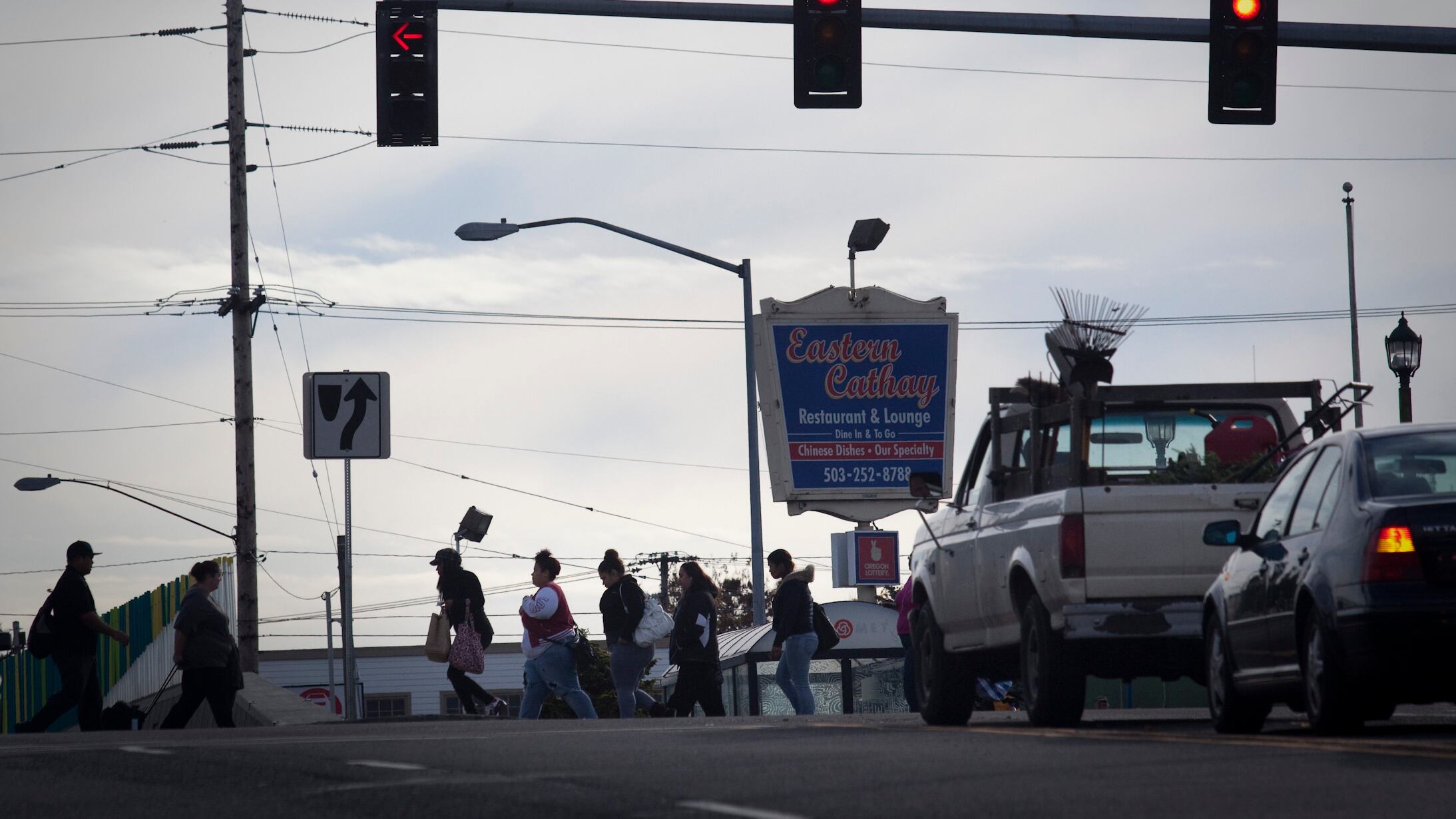For the past two years, a team within the Portland Bureau of Transportation, called PedPDX, has been reaching out to Portlanders to find out what it can do to make streets more pedestrian friendly.
In a new analysis of data, PedPDX says, "walking in Portland depends a lot on where in the city you live or work, but it also depends upon who you are."
In short: Low-income Portlanders and people of color have far more worries about walking safely.
During a "Walking While Black" focus group—in which city facilitators partnered with the Portland African American Leadership Forum, the Black Parent Initiative and the Immigrant and Refugee Community Organization—PedPDX found that concerns about poor lighting posed the biggest barrier to walking for black Portlanders.
"Focus group participants highlighted the impact that dark streets have not only on traffic safety, but on personal safety and security in the public realm," the analysis notes. "Participants shared that they regularly make travel choices based on how safe and visible the route feels, and often choose travel options that are longer or more expensive as a result."
Hannah Schafer, a communications coordinator with PBOT, says that PedPDX outreach efforts began in summer 2017, when Commissioner Steve Novick oversaw the bureau. Commissioner Chloe Eudaly took over PBOT last year.
"When assigned, her staff was made aware of this body of work and has been tracking the progress of our black community outreach efforts," Schafer says.
PedPDX community outreach efforts are organized in partnership with PBOT's public involvement coordinator and constituent services coordinator.
Other findings in the Walking While Black focus group report say that black Portlanders experience 32 percent longer waits at crosswalks before drivers yield and that black Portland area pedestrians are "stopped by police at higher rates than whites or other races." (That second claim was buttressed by a Portland Tribune series in 2017.)
"Portland is known as a liberal and progressive city, but there is still ample evidence illustrating racism is not just a thing of the past," the report reads. "The Black community continues to be subject to personal attacks that are impacting their physical safety and overall well being in public spaces."
Other respondents pointed to the more than 30 "hate incidents" reported by Oregonians since 2016—and said racial animus plays a role in where they feel safe walking.
"Being the target of racial slurs when crossing the street. I press the button to get the green light, then someone yells racial slurs at me because they have a vehicle and don't like that they were made to wait for me," one focus group member said.
Another added: "Crosswalk White girl magic—where cars stop for White women, not for Black people."
Schafer says the 49 focus group participants were each given $25 gift cards as a token of appreciation for their input and participation.
"The two Walking While Black focus groups cost a total of $2,100, which includes venue, food, outreach, childcare," she says.
In response to the focus group, PedPDX has crafted new guidelines for increasing lighting on public streets, as well as actions to "address issues of safety and security in the public right-of-way, reinforcing our commitment to equity and eliminating disparate outcomes due to race."
